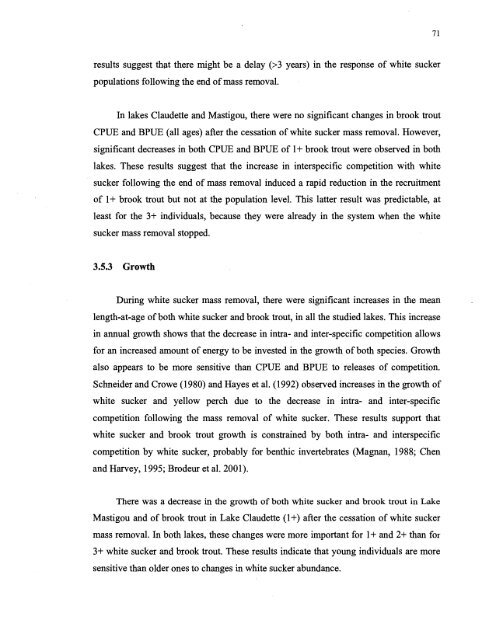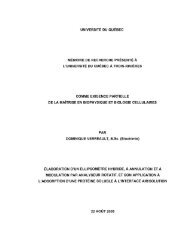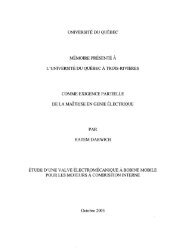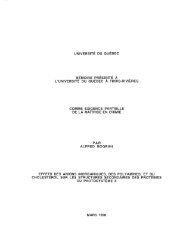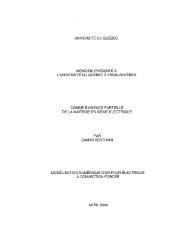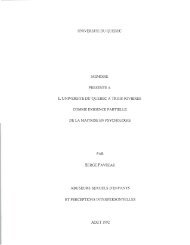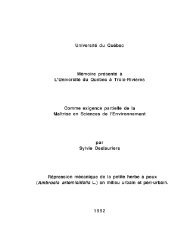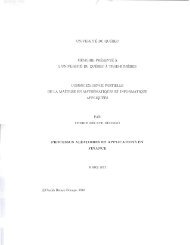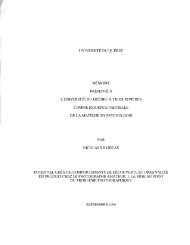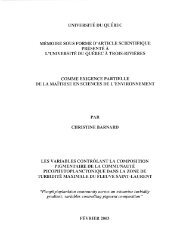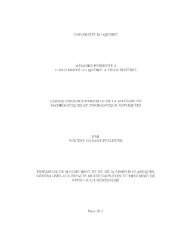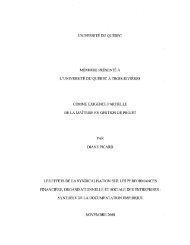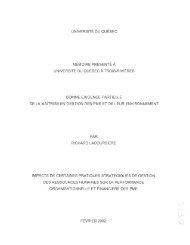Biomanipulation du meunier noir (Catostomus commersoni)
Biomanipulation du meunier noir (Catostomus commersoni)
Biomanipulation du meunier noir (Catostomus commersoni)
You also want an ePaper? Increase the reach of your titles
YUMPU automatically turns print PDFs into web optimized ePapers that Google loves.
esults suggest that there might be a de1ay (>3 years) in the response of white sucker<br />
populations foHowing the end ofmass removal.<br />
In lakes Claudette and Mastigou, there were no significant changes in brook trout<br />
CPUE and BPUE (aH ages) after the cessation of white sucker mass removal. However,<br />
significant decreases in both CPUE and BPUE of 1 + brook trout were observed in both<br />
lakes. These results suggest that the increase in interspecific competition with white<br />
sucker following the end of mass removal in<strong>du</strong>ced a rapid re<strong>du</strong>ction in the recruitment<br />
of 1 + brook trout but not at the population level. This latter result was predictable, at<br />
least for the 3+ indivi<strong>du</strong>als, because they were already in the system when the white<br />
sucker mass removal stopped.<br />
3.5.3 Growth<br />
During white sucker mass removal, there were significant increases in the mean<br />
length-at-age ofboth white sucker and brook trout, in all the studied lakes. This increase<br />
in annual growth shows that the decrease in intra- and inter-specific competition allows<br />
for an increased amount of energy to be invested in the growth of both species. Growth<br />
also appears to be more sensitive than CPUE and BPUE to releases of competition.<br />
Schneider and Crowe (1980) and Hayes et al. (1992) observed increases in the growth of<br />
white sucker and yellow perch <strong>du</strong>e to the decrease in intra- and inter-specific<br />
competition following the mass removal of white sucker. These results support that<br />
white sucker and brook trout growth is constrained by both intra- and interspecific<br />
competition by white sucker, probably for benthic invertebrates (Magnan, 1988; Chen<br />
and Harvey, 1995; Brodeur et al. 2001).<br />
There was a decrease in the growth of both white sucker and brook trout in Lake<br />
Mastigou and of brook trout in Lake Claudette (1 +) after the cessation of white sucker<br />
mass removal. In both lakes, these changes were more important for 1 + and 2+ than for<br />
3+ white sucker and brook trout. These results indicate that young indivi<strong>du</strong>als are more<br />
sensitive than older ones to changes in white sucker abundance.<br />
71


